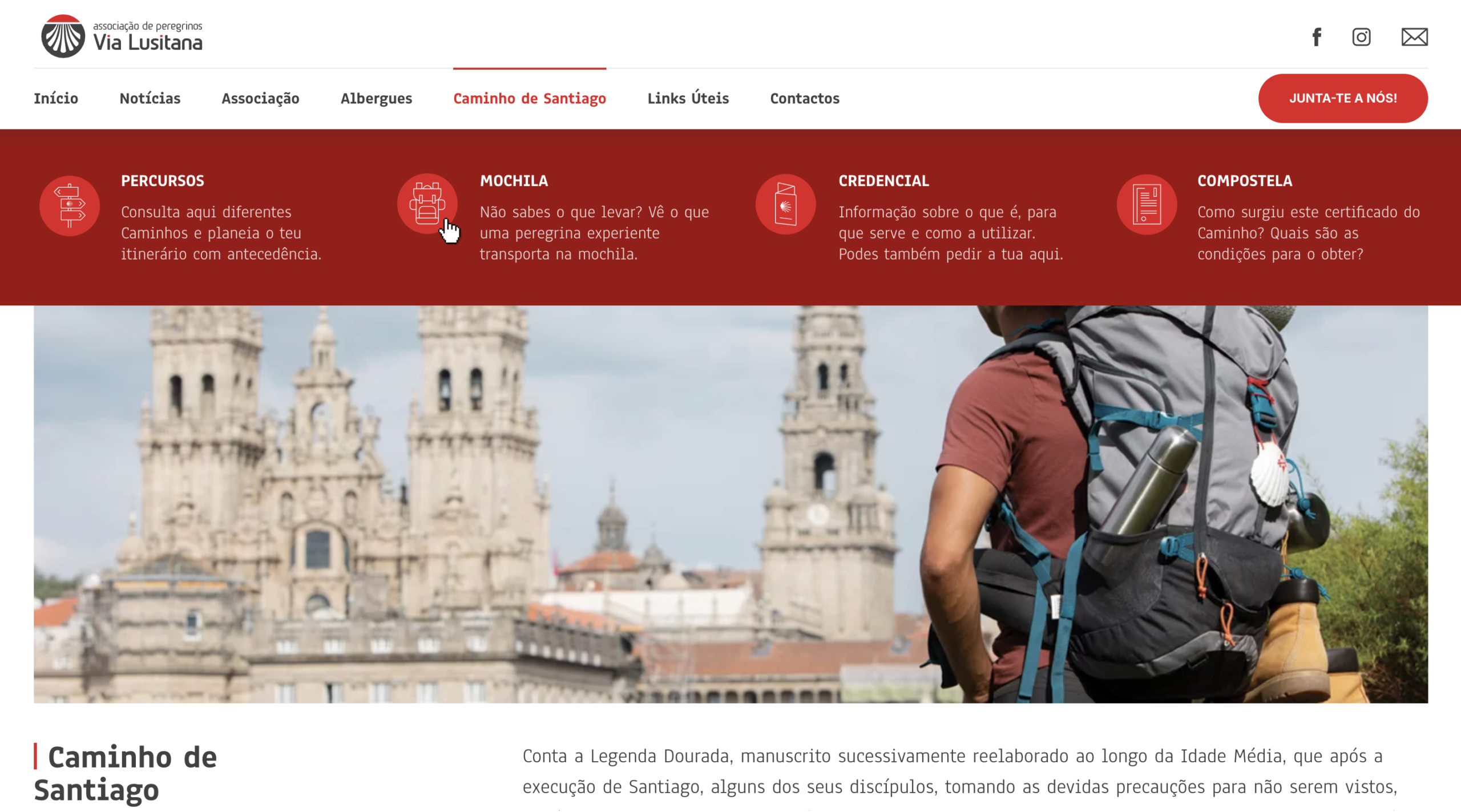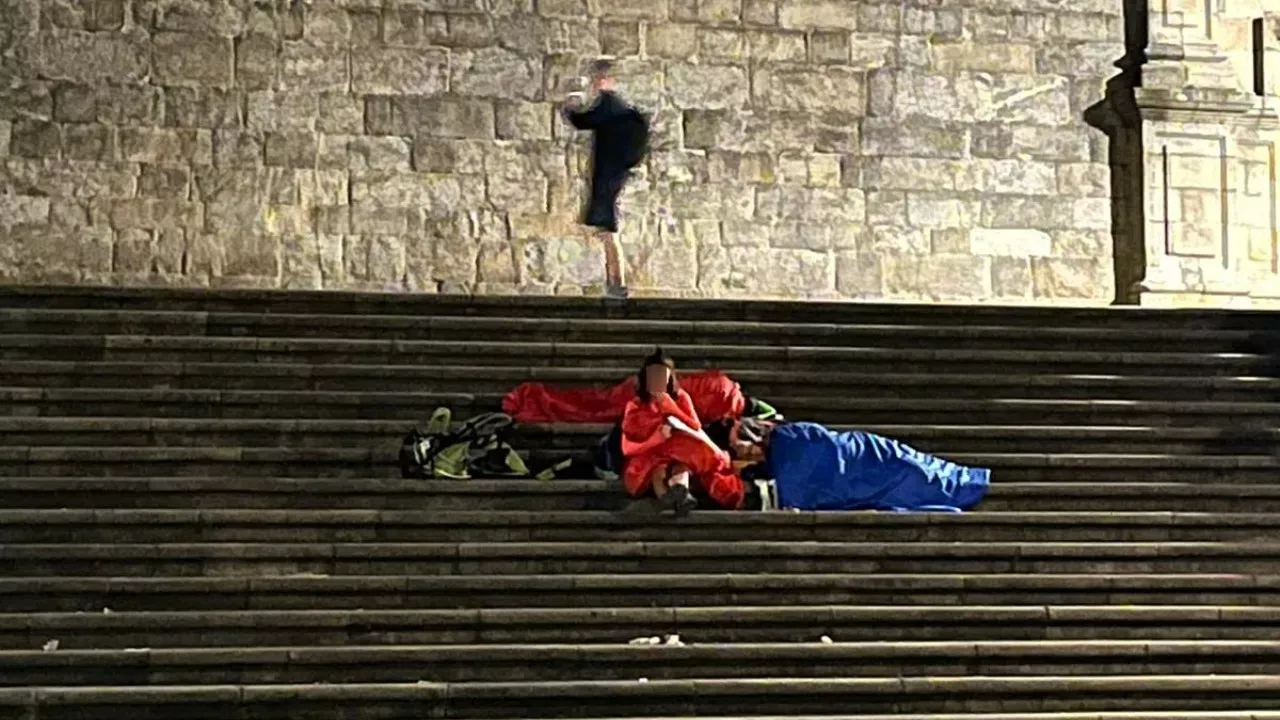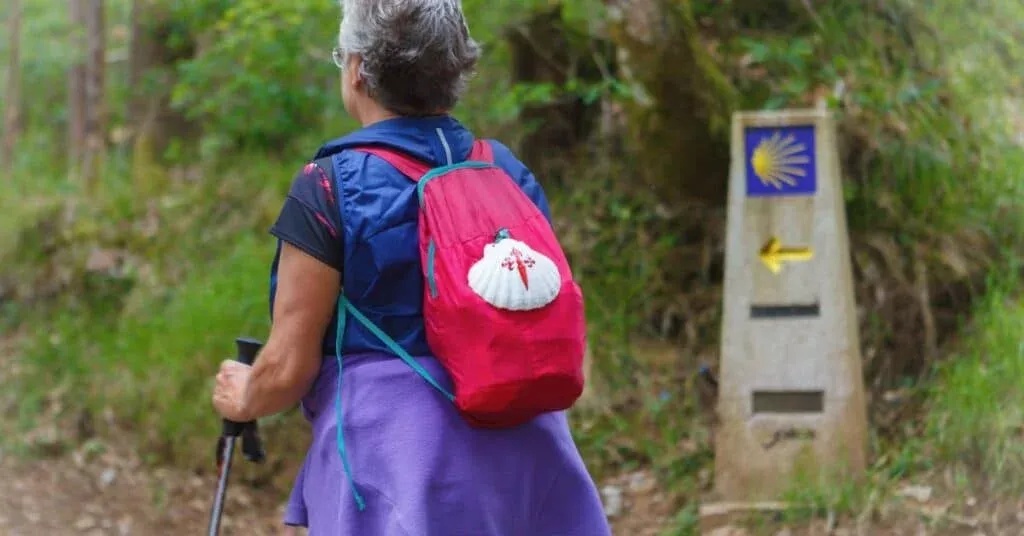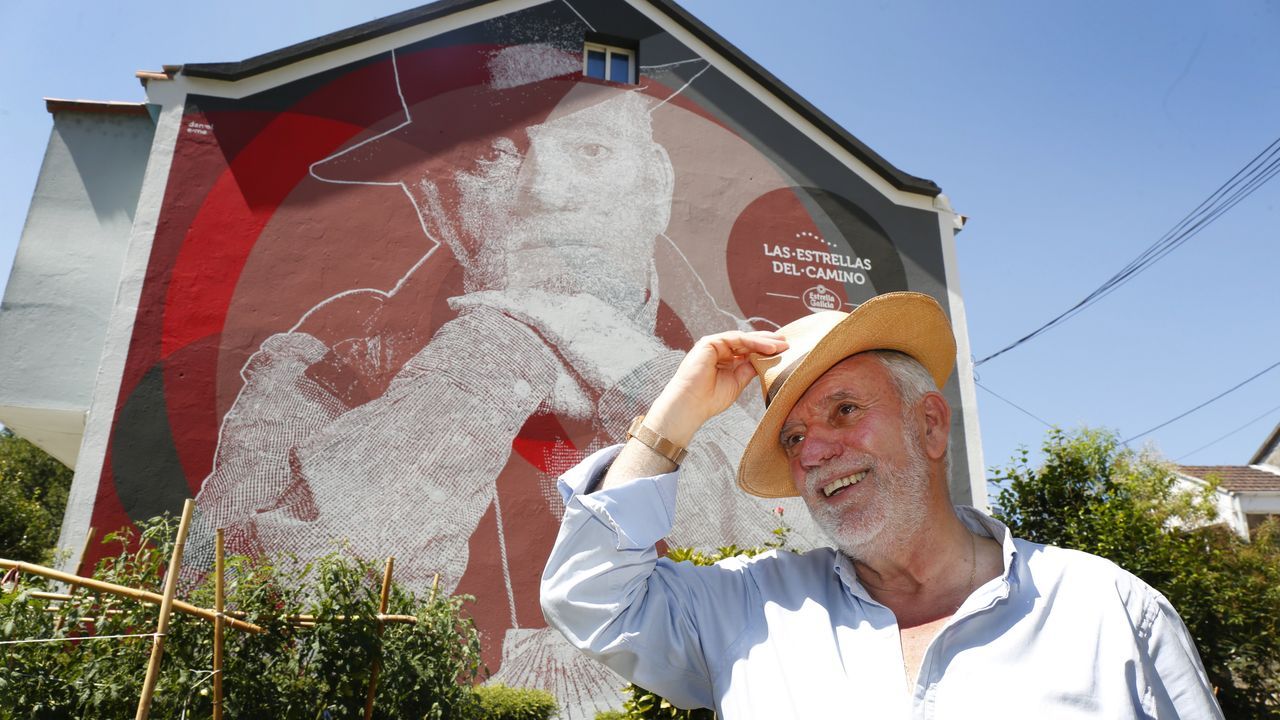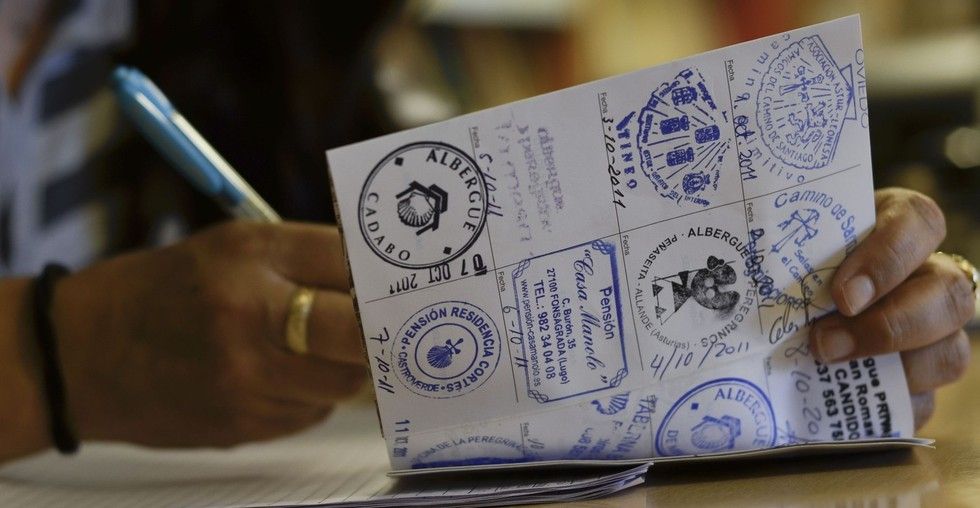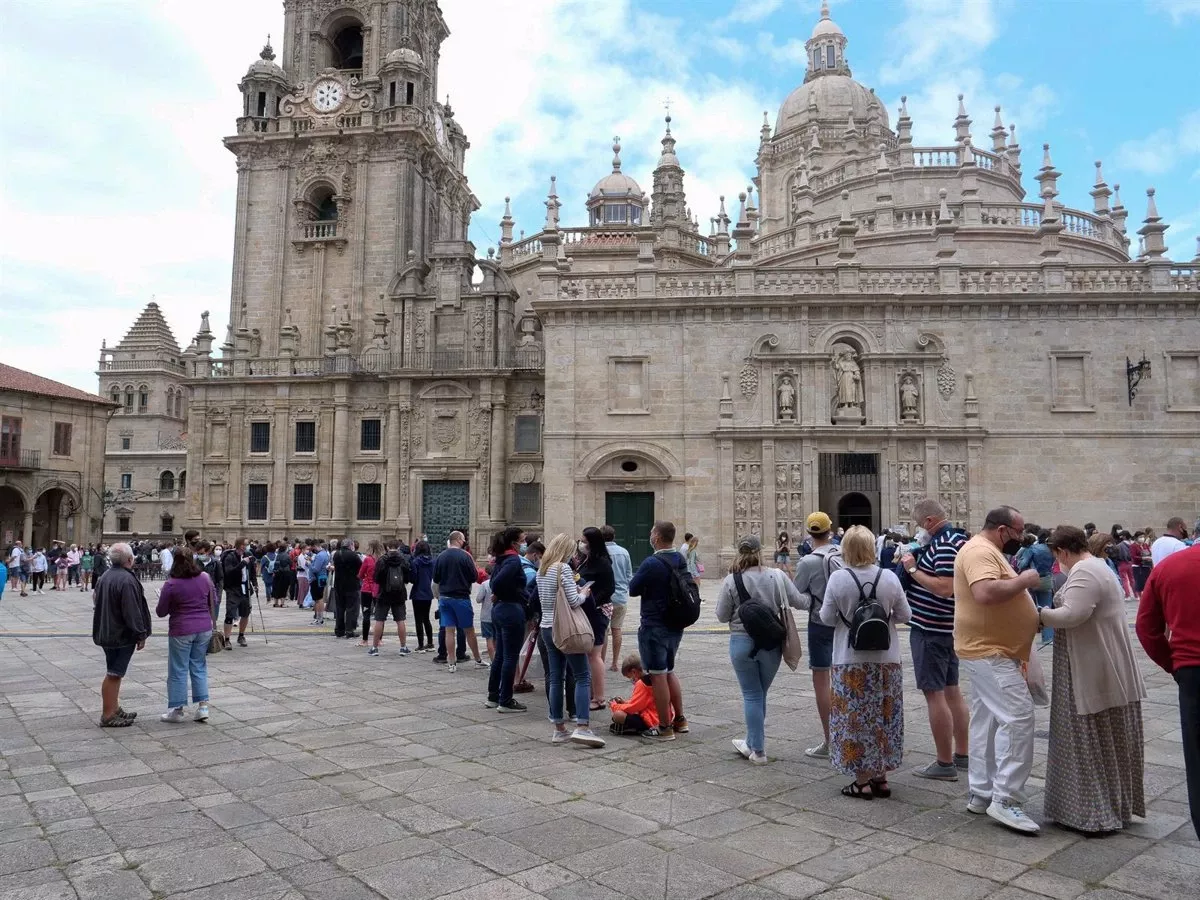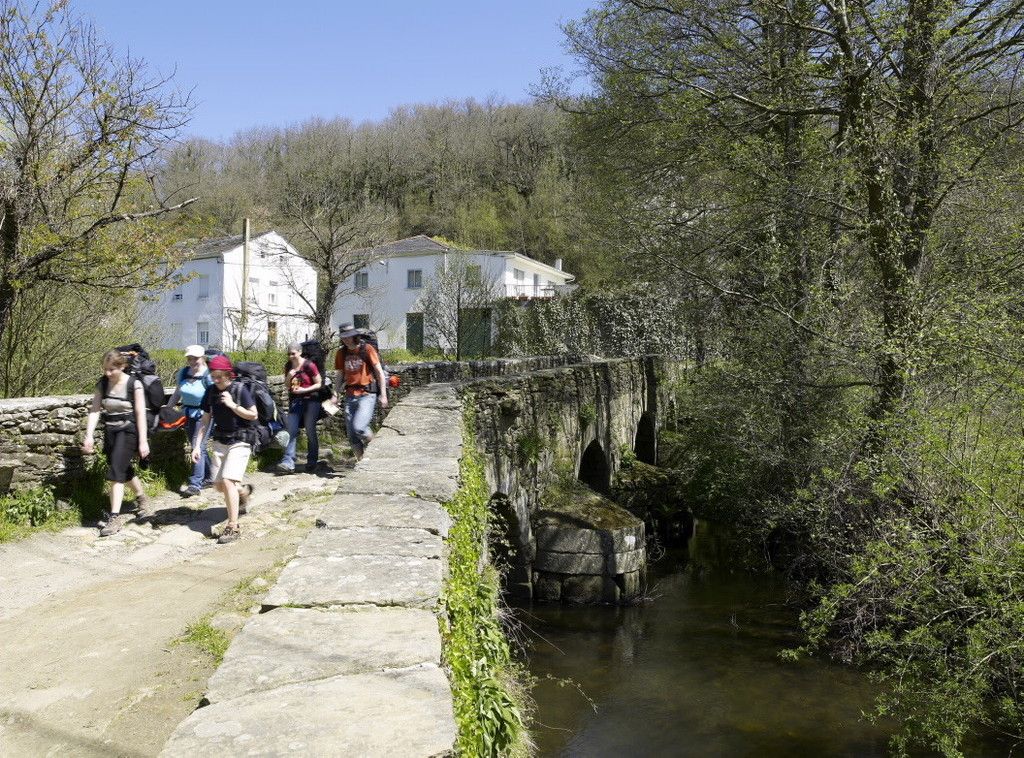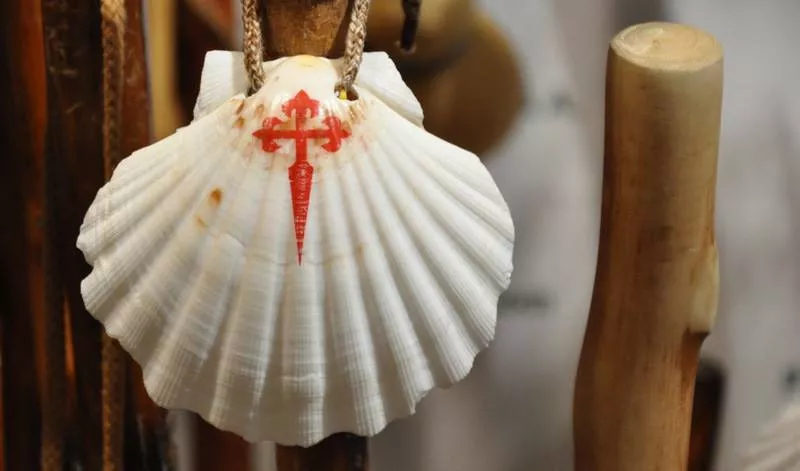Via Lusitana Pilgrim Association has just launched its new website, a significant step toward improving accessibility and the experience for users interested in the Camino de Santiago. This digital upgrade is accompanied by a slight redesign of the Association’s logo, aimed at simplifying its use across different platforms.
The new website, available at www.vialusitana.org, features a modern and intuitive design, developed to provide smoother and more efficient navigation. The platform was created following best accessibility practices, ensuring that all users can intuitively access essential...
Controversial campsite at Praterías: “My city is not a circus”
A video of three Portuguese pilgrims in sleeping bags on the staircase stirs social media and ignites a new debate about the vandalism of historical heritage.
August is coming to an end, but tourists and pilgrims continue to arrive in droves in Santiago. Occasionally, they become the subject of debate on social media due to uncivil behaviors. From graffiti on the stones of the monumental zone to bathing in the fountain at Praterías, vandalism constantly finds new forms of expression. If in June a campsite at the Alameda overlooking the Cathedral went viral, this time it is the building itself...
More and more women walk – and alone – the Camino de Santiago
In recent years, the Camino de Santiago has witnessed a significant transformation in the profile of its pilgrims, with a notable increase in female participation. According to recent data, women now account for approximately 48% of all pilgrims, with a growing trend of traveling alone in search of introspection and personal growth.
This phenomenon is partly driven by the social and psychological changes brought about by the COVID-19 pandemic. During the lockdown period, many women reflected on the need to rediscover their independence and seek new forms of self-awareness. The pilgrimage to...
The other ‘Caminos’ from Pontevedra to Santiago – interview with Tino Lores
Various itineraries in the province of Pontevedra invite pilgrims to head to Santiago, beyond the popular Portuguese Camino and the Coastal Route, which attract most travelers journeying to Compostela from southern Galicia. In this province, there is also a route where Santiago and its cathedral are just one stage towards a final destination: the Via Mariana, which begins in northeastern Portugal and leads travelers to Muxía, the great sanctuary of the Virgin near Galicia’s “end of the world.”
Currently, five pilgrimage routes to Compostela hold official recognition, certified by...
Some obtain the Compostela without walking the Camino
The Archdiocese of Santiago has recently become aware of a practice involving the sale of Camino de Santiago credentials, already stamped with all the required seals, for 30 euros to people who have not walked a single kilometer of the route. Since the holder’s details are left blank, anyone can fill in their name and go to the Oficina del Peregrino (Pilgrim Reception Point, in Santiago) to obtain the Compostela without making any effort.
This practice, exposed on social media, has reached the Archdiocese, which considers it a “fraud by the seller but, above all, by the buyer.” They argue that...
A taste of the Camino: savoring the journey
The Portuguese Camino to Santiago offers not only a spiritual and physical journey but also a rich culinary experience that reflects the gastronomic traditions of the regions it crosses. From Portuguese delicacies at the start of the route to the typical dishes of Galicia at its end, the Camino is a true feast of flavors and cultures.
At the beginning of the journey, in Portugal, pilgrims are welcomed with traditional dishes that reflect the country’s rich culinary heritage. The city of Porto, for instance, is famous for bacalhau à Gomes de Sá, a dish made with shredded codfish, potatoes,...
Santiago sees tourism growth in August 2024 after a modest July
Santiago de Compostela is experiencing a strong influx of tourists in August 2024, consolidating its position as one of Spain’s most sought-after destinations. This growth reflects the positive trend observed since May, with a notable increase in both visitors and overnight stays. According to the latest data from the National Institute of Statistics (INE), this month stands out for the significant presence of international tourists, who have contributed to the city’s economic dynamism.
This rise in tourist numbers is evident in the daily queues to enter the Cathedral of Santiago de...
Vandalism against historical heritage: why isn’t it penalized?
The Cultural Heritage Law of Galicia establishes fines ranging from 6,001 to 150,000 euros for those who vandalize historical monuments, such as the Cathedral of Santiago de Compostela. However, the effective enforcement of these sanctions is a considerable challenge.
Although the legislation clearly outlines severe penalties for acts of vandalism against cultural heritage, the process of identifying and punishing offenders is often lengthy and complicated. Difficulties in identifying perpetrators, combined with the bureaucracy of legal procedures, frequently result in impunity for many of these...
The impact of the Camino on communities: culture, economy, and identity
The Camino de Santiago is a significant spiritual route for thousands of pilgrims, but it also plays a crucial role for the small villages and towns it traverses. This route is not just a physical path but a transformative force that deeply affects the culture, economy, and identity of the regions it crosses.
In many rural areas of Spain and Portugal, the Camino has been a vital economic driver. The increase in the number of pilgrims over the last decades has led to the creation of new businesses such as albergues, restaurants, and shops. Sarria, in Galicia, is a notable example where the growth...
Portuguese Coastal Route continues to grow: a record in sight
August ends with the 50,000th pilgrim passing through Vigo, and the Coastal Route is about to reach a new historic milestone: more than 45,000 pilgrims have walked this route, which is known for being the most international and the one that grew the most in 2023. This increase in popularity has primarily been driven by women, who represent the majority of walkers on this route.
This impressive number confirms that the previous record is about to be surpassed: in 2023, 52,000 pilgrims used the Portuguese Coastal Route, and predictions for 2024 suggest that, with September and October –...
Legends and myths of the Camino: what you won’t find in the tourist guides
The Camino de Santiago is not just a route of spiritual pilgrimage, but also a place filled with legends and myths that have fascinated pilgrims for centuries. These stories, often intertwined with historical facts, enrich the experience of those who walk this ancient path and add a touch of mystery to the journey.
One of the best-known legends is the “Miracle of the Hen” in Santo Domingo de la Calzada. According to tradition, a young French pilgrim was falsely accused of theft and hanged in the town. The young man’s mother, desperate, prayed to Santo Domingo, asking for her son’s life to be...
Efforts for a sustainable religious tourism
In recent years, the Camino de Santiago has been adopting sustainable tourism practices in response to the growing number of pilgrims and the need to protect the environment while supporting local communities. Sustainable tourism refers to practices that aim to balance environmental conservation, economic development, and cultural preservation, ensuring that tourism benefits the environment and communities without compromising the ability of future generations to enjoy the same resources.
Along the route, many albergues and small accommodations have invested in sustainable practices such as...
